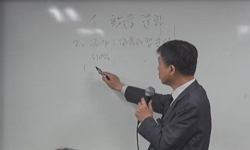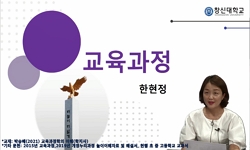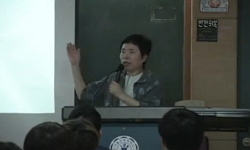세계화의 추세 속에서 사회 전반에 학문 영역 간의경계가 허물어지면서 융합․통섭의 분위기가 확산되고 있다. 1980년대 이후 세계적인 대학이 융합교육과정을 채택하면서 예술․디자인대...
http://chineseinput.net/에서 pinyin(병음)방식으로 중국어를 변환할 수 있습니다.
변환된 중국어를 복사하여 사용하시면 됩니다.
- 中文 을 입력하시려면 zhongwen을 입력하시고 space를누르시면됩니다.
- 北京 을 입력하시려면 beijing을 입력하시고 space를 누르시면 됩니다.

국내 예술⋅디자인대학의 융합 교육 현황 및 제안 = A Proposal and the Current Status of Convergence Education on Korea’s Art and Design College
한글로보기부가정보
국문 초록 (Abstract)
본 연구는 융합교육의 필요성 및 사회 현상, 세계 선진대학의 예술・디자인 영역 융합교육과정 및 교과목개설 현황, 국내 예술․디자인대학 교육과정 및 교과목개설 현황 등을 연구 한 후 융합교육과정 및 교과목을 제안하였다. 국내 예술․디자인대학의 융합교육에 관한연구는 서울․경기권 15개 대학의 교육과정을 연구한후에 세부적으로 시각디자인학과와 산업디자인학과의교육과정을 연구․분석하였다. 해외 사례연구는 프렛인스티튜트(Pratt Institute), 파슨스 디자인학교(Parsons School of Design) 등을 중심으로 시각 및 산업디자인 전공의 교육과정을 연구․분석하였다.
국내 대학의 융합교육과정 개설현황을 분석하면 시각디자인학과에서는 디자인과 문화, 디자인과 심리학,디자인마케팅, 디자인과 비즈니스 등의 교과목이 개설되어 있다. 산업디자인학과에서는 디자인과 마케팅,디자인과 비즈니스, 디자인과 매니지먼트, 디자인과인간공학, 디자인과 감성공학 등의 융합교과목이 개설되어 있다. 이와 같이 융합교과목의 대부분이 이론과목으로 개설되어 있음으로 이론과목과 실기과목의 조화에 바탕을 둔 융합교육과정 및 교과목 개발이 필요하다. 서울대학교 ‘통합창의디자인(Integrated CreativeDesign) 연계전공’과 이화여자대학교 ‘융합디자인 연계전공’을 개설하고 있으나 전통적인 개별교과들을 다양하게 이수하도록 하는 교육과정을 운영하고 있다.
이러한 병렬적으로 나열하는 융합교육과정 함께 다양한 학문 내용을 하나의 통합 콘텐츠로 구성하여 교과목을 개설하는 다학문통합의 교과목 개발이 필요하다.
산업디자인 영역에서 이순종 교수가 제안한IPDI((Institute of Product Design Innovation) 교육과정은 디자인, 경영, 공학의 대표적인 융합교육과정이라 할 수 있다.
융합교육과정은 대학의 융합 교육목적과 인재상에따라 융합교육과정의 교육내용과 융합방식이 다양하게 채택되어야 할 것이다. 융합교육과정은 전공에 따라 융합방식이 달라져야 할 것이다. 산업디자인영역에선 경영학과 공학적 측면을 중심으로 융합교육을 시행하고 있다면, 시각디자인 영역에서는 심리학, 문화,기호학 등을 중심으로 융합하는 것이 필요할 것이다.
또한 융합교육과정의 운영에서 교육방법 및 평가방식,지원체제 등의 논의가 있어야 할 것이다. 디지털시대에 부응하는 융합교육 연구는 좁은 의미의 예술・디자인 관련분야 뿐만 아니라 자연과학 및 공학 등의학제적인 연구가 이루어져야 할 것이다. 이러한 연구는 국내 예술디자인 대학의 융합교육 활성화를 위하여 활용될 수 있을 것으로 예상한다.
세계화의 추세 속에서 사회 전반에 학문 영역 간의경계가 허물어지면서 융합․통섭의 분위기가 확산되고 있다. 1980년대 이후 세계적인 대학이 융합교육과정을 채택하면서 예술․디자인대학의 교육과정도 학과나 전공중심의 교육과정에서 융합교육과정으로 변화하고 있다. 그러나 국내 예술․디자인대학의 융합교육과정과 교과목 개발은 초기 단계임으로 학제적 연구의 교과목 개발 및 교육과정 개편이 필요하다.
본 연구는 융합교육의 필요성 및 사회 현상, 세계 선진대학의 예술・디자인 영역 융합교육과정 및 교과목개설 현황, 국내 예술․디자인대학 교육과정 및 교과목개설 현황 등을 연구 한 후 융합교육과정 및 교과목을 제안하였다. 국내 예술․디자인대학의 융합교육에 관한연구는 서울․경기권 15개 대학의 교육과정을 연구한후에 세부적으로 시각디자인학과와 산업디자인학과의교육과정을 연구․분석하였다. 해외 사례연구는 프렛인스티튜트(Pratt Institute), 파슨스 디자인학교(Parsons School of Design) 등을 중심으로 시각 및 산업디자인 전공의 교육과정을 연구․분석하였다.
국내 대학의 융합교육과정 개설현황을 분석하면 시각디자인학과에서는 디자인과 문화, 디자인과 심리학,디자인마케팅, 디자인과 비즈니스 등의 교과목이 개설되어 있다. 산업디자인학과에서는 디자인과 마케팅,디자인과 비즈니스, 디자인과 매니지먼트, 디자인과인간공학, 디자인과 감성공학 등의 융합교과목이 개설되어 있다. 이와 같이 융합교과목의 대부분이 이론과목으로 개설되어 있음으로 이론과목과 실기과목의 조화에 바탕을 둔 융합교육과정 및 교과목 개발이 필요하다. 서울대학교 ‘통합창의디자인(Integrated CreativeDesign) 연계전공’과 이화여자대학교 ‘융합디자인 연계전공’을 개설하고 있으나 전통적인 개별교과들을 다양하게 이수하도록 하는 교육과정을 운영하고 있다.
이러한 병렬적으로 나열하는 융합교육과정 함께 다양한 학문 내용을 하나의 통합 콘텐츠로 구성하여 교과목을 개설하는 다학문통합의 교과목 개발이 필요하다.
산업디자인 영역에서 이순종 교수가 제안한IPDI((Institute of Product Design Innovation) 교육과정은 디자인, 경영, 공학의 대표적인 융합교육과정이라 할 수 있다.
융합교육과정은 대학의 융합 교육목적과 인재상에따라 융합교육과정의 교육내용과 융합방식이 다양하게 채택되어야 할 것이다. 융합교육과정은 전공에 따라 융합방식이 달라져야 할 것이다. 산업디자인영역에선 경영학과 공학적 측면을 중심으로 융합교육을 시행하고 있다면, 시각디자인 영역에서는 심리학, 문화,기호학 등을 중심으로 융합하는 것이 필요할 것이다.
또한 융합교육과정의 운영에서 교육방법 및 평가방식,지원체제 등의 논의가 있어야 할 것이다. 디지털시대에 부응하는 융합교육 연구는 좁은 의미의 예술・디자인 관련분야 뿐만 아니라 자연과학 및 공학 등의학제적인 연구가 이루어져야 할 것이다. 이러한 연구는 국내 예술디자인 대학의 융합교육 활성화를 위하여 활용될 수 있을 것으로 예상한다.
다국어 초록 (Multilingual Abstract)
After searching on the course establishment basedon convergence education in domestic universities,several newly-opened classes were found - Design andCulture, Design and Psychology, Design Marketing, andDesign and Business in the department of vidual design,and Design and Management, Design and HumanEngineering, and Design and Sensibility Ergonomics inindustrial design major. Likewise, the majority ofconvergent courses are fundamentally theory-based,thus it is necessary to further develop the classes forpractice as well. Recently, both Seoul NationalUniversity and Ewha Woman’s University haveestablished an interdisciplinary study courses ofIntegrated Creative Design, and Fusion Design, but theinstitutes still continue providing the traditional subjectfor a variety of choices.
This way of arranging separate types of courses willdevelop into multidisciplinary study. In industrial designarea, Professor Lee, Soon-jong has proposed a newcurriculum of IPDI (Institute of Product DesignInnovation), which is recognized as a epitome forconvergence education. However, curriculum forconvergence education should be selected in accordancewith different talents as well as varying its content bydifferent majors. For example, if industrial design majorcombines the aspects of business administration andengineering, vidual design major is to amalgamatesubjects like psychology, cultural study, semiotics andso on. Moreover, there will be need for discussion on themanagement method, and evaluation and support systemsfor the convergent curriculum. In short, convergenteducation that meets the digital age means appropriateinterdisciplinary studies between art and design, andhuman science and engineering. This type of researchis expected to help apply and vitalize the utilization ofconvergence education in domestic art and design college.
With the trend of globalization, the boundarybetween study subjects have been blurred and the tendency of fusion and consilience is becomingprevalent. Since 1980s, the world-class universitieshave been prone to adopt and change their directionsinto co...
With the trend of globalization, the boundarybetween study subjects have been blurred and the tendency of fusion and consilience is becomingprevalent. Since 1980s, the world-class universitieshave been prone to adopt and change their directionsinto convergence education. Along with this paradigmshift, art and design education in university is alsochanging its major-centered curriculum intoconvergence education. In Korean universities,however, art and design education needs to makereform in its curriculum and subject development onthe basis of convergence strategy. This researchpresents a development plan for convergent curriculumand the corresponding subjects in art and design collegeof Korea after analysing the educational templates andthe current status of the advanced countries. For theresearch of domestic status, the curricula of visualdesign and industrial design majors of fifteenuniversities in Seoul and Gyeonggi-do area wereanalyzed. For the case of foreign institutes, PrattInstitute and Parsons School of Design were forcomparison analysis.
After searching on the course establishment basedon convergence education in domestic universities,several newly-opened classes were found - Design andCulture, Design and Psychology, Design Marketing, andDesign and Business in the department of vidual design,and Design and Management, Design and HumanEngineering, and Design and Sensibility Ergonomics inindustrial design major. Likewise, the majority ofconvergent courses are fundamentally theory-based,thus it is necessary to further develop the classes forpractice as well. Recently, both Seoul NationalUniversity and Ewha Woman’s University haveestablished an interdisciplinary study courses ofIntegrated Creative Design, and Fusion Design, but theinstitutes still continue providing the traditional subjectfor a variety of choices.
This way of arranging separate types of courses willdevelop into multidisciplinary study. In industrial designarea, Professor Lee, Soon-jong has proposed a newcurriculum of IPDI (Institute of Product DesignInnovation), which is recognized as a epitome forconvergence education. However, curriculum forconvergence education should be selected in accordancewith different talents as well as varying its content bydifferent majors. For example, if industrial design majorcombines the aspects of business administration andengineering, vidual design major is to amalgamatesubjects like psychology, cultural study, semiotics andso on. Moreover, there will be need for discussion on themanagement method, and evaluation and support systemsfor the convergent curriculum. In short, convergenteducation that meets the digital age means appropriateinterdisciplinary studies between art and design, andhuman science and engineering. This type of researchis expected to help apply and vitalize the utilization ofconvergence education in domestic art and design college.
참고문헌 (Reference)
1 노상우, "학문융합 관점에서 본 현대교육의 이론적-실천적 변화 모색" 교육종합연구소 10 (10): 67-88, 2012
2 이영만, "통합교육과정" 학지사 2001
3 에두워드 윌슨, "통섭: 지식의 대통합" 사이언스북스 2005
4 이희용, "지식융합 교육을 위한 교과목 개발" 한국교양교육학회 5 (5): 11-37, 2011
5 김원택, "융합형 디자인교육을 통한 창의성 개발" 2010
6 김혜영, "융합교육의 체계화를 위한 융합교육의 방향과 기초융합교과 설계에 대한 제언" 한국교양교육학회 7 (7): 11-38, 2013
7 홍병선, "융합교육을 통한 기초교양교육 활성화 방안연구" 중앙대학교 교양교육연구소 4 : 2011
8 윤민희, "디지털시대의 디자인대학 기초교육과정에 관한 연구" 한국디자인문화학회 12 (12): 217-232, 2006
9 정선희, "디자인교육에서의 학제 간 Radical Collaboration 사례연구" 2010
10 허영주, "대학 융합교육의 문제점과 개선방안 탐색" 교육종합연구소 11 (11): 45-79, 2013
1 노상우, "학문융합 관점에서 본 현대교육의 이론적-실천적 변화 모색" 교육종합연구소 10 (10): 67-88, 2012
2 이영만, "통합교육과정" 학지사 2001
3 에두워드 윌슨, "통섭: 지식의 대통합" 사이언스북스 2005
4 이희용, "지식융합 교육을 위한 교과목 개발" 한국교양교육학회 5 (5): 11-37, 2011
5 김원택, "융합형 디자인교육을 통한 창의성 개발" 2010
6 김혜영, "융합교육의 체계화를 위한 융합교육의 방향과 기초융합교과 설계에 대한 제언" 한국교양교육학회 7 (7): 11-38, 2013
7 홍병선, "융합교육을 통한 기초교양교육 활성화 방안연구" 중앙대학교 교양교육연구소 4 : 2011
8 윤민희, "디지털시대의 디자인대학 기초교육과정에 관한 연구" 한국디자인문화학회 12 (12): 217-232, 2006
9 정선희, "디자인교육에서의 학제 간 Radical Collaboration 사례연구" 2010
10 허영주, "대학 융합교육의 문제점과 개선방안 탐색" 교육종합연구소 11 (11): 45-79, 2013
11 이순종, "다학제적 접근을 통한 대학디자인 교육혁신 프로그램 연구" 한국디자인학회 20 (20): 299-314, 2007
12 이순종, "다학제 접근 비교 연구" 2005
13 권성호, "교양 교육에서의 융합적 교육과정으로의 접근: 한양대 사례를 중심으로" 2 (2): 2008
14 하헌형, "“잡스같은 인재 키워라” …대학전공융⋅복합’ 바람"
15 "www.swu.ac.kr"
16 "www.sungshin.ac.kr"
17 "www.steamedu.com/"
18 "www.sookmyung.ac.kr"
19 "www.snu.ac.kr"
20 "www.seoultech.ac.kr"
21 "www.pratt.edu"
22 "www.ppe.ox.ac.uk/index.php/course-content-philoso phy"
23 "www.newschool.edu"
24 "www.kookmin.ac.kr"
25 "www.konkuk.ac.kr"
26 "www.khu.ac.kr"
27 "www.hongik.ac.kr"
28 "www.hanyang.ac.kr"
29 "www.gachon.ac.kr"
30 "www.ewha.ac.kr"
31 "www.ensad.fr"
32 "www.edpolicy.net/EpnicGlobal/Epnic/EpnicGlo bal01Viw.php?PageNum=1&searchSel=&searchKeyword=&Ac _Group=4&Ac_Code=D0060100&Ac_Num0=16155"
33 "www.dongduk.ac.kr"
34 "www.dankook.ac.kr"
35 "www.cau.ac.kr"
동일학술지(권/호) 다른 논문
-
- 한국디자인문화학회
- 송지성(Ji Sung Song)
- 2014
- KCI등재
-
- 한국디자인문화학회
- 송하영(Ha Young Song)
- 2014
- KCI등재
-
어린이체험 전시관의 디지털미디어를 활용한 인터랙션 특성에 관한 연구
- 한국디자인문화학회
- 심소연(So Yeon Sim)
- 2014
- KCI등재
-
- 한국디자인문화학회
- 안인희(In Hee Ahn)
- 2014
- KCI등재
분석정보
인용정보 인용지수 설명보기
학술지 이력
| 연월일 | 이력구분 | 이력상세 | 등재구분 |
|---|---|---|---|
| 2026 | 평가예정 | 재인증평가 신청대상 (재인증) | |
| 2020-01-01 | 평가 | 등재학술지 유지 (재인증) |  |
| 2017-01-01 | 평가 | 등재학술지 유지 (계속평가) |  |
| 2013-01-01 | 평가 | 등재학술지 유지 (등재유지) |  |
| 2010-01-01 | 평가 | 등재학술지 유지 (등재유지) |  |
| 2007-01-01 | 평가 | 등재학술지 선정 (등재후보2차) |  |
| 2006-01-01 | 평가 | 등재후보 1차 PASS (등재후보1차) |  |
| 2004-01-01 | 평가 | 등재후보학술지 선정 (신규평가) |  |
학술지 인용정보
| 기준연도 | WOS-KCI 통합IF(2년) | KCIF(2년) | KCIF(3년) |
|---|---|---|---|
| 2016 | 0.6 | 0.6 | 0.54 |
| KCIF(4년) | KCIF(5년) | 중심성지수(3년) | 즉시성지수 |
| 0.52 | 0.5 | 0.732 | 0.06 |




 KCI
KCI






